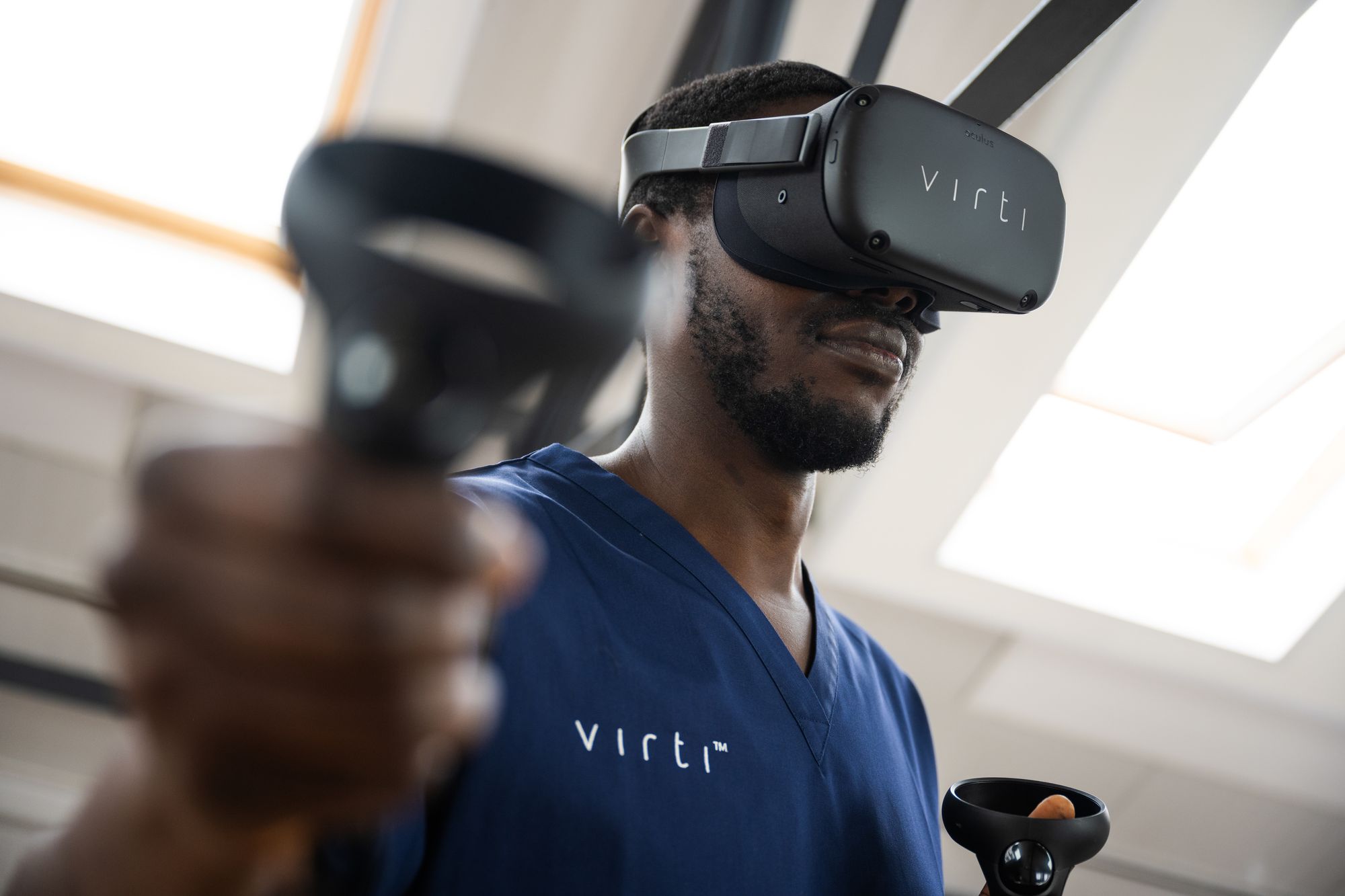5 ways VR can help you successfully onboard new team members
When it comes to onboarding new employees, there's no one-size-fits-all approach. Here are five innovative ways VR can help get your new team up to speed.

When welcoming new members to your team, onboarding is a crucial opportunity to set them up for success and happiness in their role. Recent research has drawn clear links between a successful onboarding process and a boost to both productivity and staff retention. But besides the clear commercial incentive of getting this process right, there’s a real human benefit for your employees, too.
Proactively nurturing a new hire’s development from the get-go signals to staff that they are valued, and that their organisation wants to see them excel. And, by giving new recruits a strong grounding in your company ethos and goals from Day One, you’ll help them to feel engaged and at ease. Ultimately, this will help them get the most out of their work and to perform at their very best.
So how can you ensure that your process for new employees is consistent, scalable and impactful? By leveraging the power of Virtual Reality, there are a number of simple ways you can tailor and refine your company’s onboarding process to make every new recruit a success story. Read on to find out what they are.
1. Embedding company culture
Embedding company culture in new team members can often be a tricky thing to achieve, but for those who do, there are huge rewards to be reaped. Employees are much more likely to be engaged with their work when they feel like a valued member of your community, are aligned with your key company goals, and share and understand your company mission.
VR is a great tool for demonstrating and instilling company culture - especially with hybrid or remote teams. One way to do this is by hosting a virtual event - for example, a team bonding day, a summer party or a Friday coffee morning. Immersed in a shared virtual space, employees can interact with other team members remotely via avatars, gain new skills through fun virtual games or challenges, and learn about your company in a safe, remote environment. This will help new employees to feel truly welcomed to the team, and encourage them to engage fully with company culture moving forward.

2. Greater interactivity
Delivering a truly interactive onboarding process is more important than ever in the post-pandemic era of hybrid and remote working. After all, if there’s anything less engaging than a static Powerpoint presentation, it’s watching that Powerpoint presentation on a computer screen!
These outdated onboarding methods need a shake-up to reflect new ways of working, and employees have, quite rightly, come to expect this during their inductions, too. Training for new team members should be on-demand, easily accessible, and fun!
With VR content accessible from the comfort of employees’ own homes - via desktop, laptop or mobile devices - all of these requirements can be met. Employees can complete a fully interactive, immersive and engaging onboarding programme without once stepping foot in an office. Here at Virti, our onboarding programme couples VR modules with one-to-one coaching and check-ins from senior team members. This approach means that our new hires are adding value to the company in as little as three weeks.

3. Embedding skills training
One particular area in which VR offers significantly greater interactivity is skills training. Immersive virtual simulations can be used to give individuals the chance to try out new skills in a safe, customisable and risk-free environment. Customer service employees can practise handling difficult conversations with a virtual human, for example. By replacing the often stilted in-person roleplay with an AI-powered avatar, this removes any awkwardness and enables employees to rehearse safely and embed the skills they need.
Giving those in training the opportunity to learn from their mistakes in a relaxed environment is particularly important for building up confidence in their new, possibly unfamiliar, role. Training undertaken using virtual simulations can also be repeated an infinite number of times, and performance data can be tracked and monitored by managers in order to identify areas where further support is needed.
Want to hear more from us?

4. Setting a clear framework for success
A common mistake in the development of VR onboarding programs is a neglect of the supporting elements. Building in a framework for goal setting and reflection is a crucial one of those elements - something that should be considered integral, not a nice-to-have, or an accessory.
At Virti, we use a system called VOS2, which stands for Vision, Values, Objectives, Obstacles, Strategy, and Specific Metrics. It’s a living document updated throughout the year that allows companies, teams and individuals to align their goals in a way that’s in keeping with the company mission. Each team lead and individual owns their VOS2 and new hires create their own during the onboarding process so that they know exactly where they fit in and what their aims should be.

5. Gathering feedback
Feedback is a crucial tool for delivering a successful onboarding process. The feedback gathered in this process should be intuitive and unbiased and should help to identify areas for improvement in real-time.
At Virti, we created the Virti Feedback Suite to help us do just that. A no-code digital survey creation tool which allows employers to engage with the thoughts of their employees in a real-time, actionable way. The Feedback Suite provides AI-driven objective and measurable data points. These can be used to track employee performance, wellbeing and engagement throughout the onboarding process and beyond.
In this two-way feedback system, areas for concern can be flagged instantly, and then dealt with before they become more serious. This helps both you as employer, and your new employees, to reflect on progress in a timely, meaningful way. By using feedback in this way, we’re able to offer tailored support to all new and existing team members.
We hope these simple tips can help you fine-tune your onboarding process and make welcoming new employees more time-efficient and successful than ever before. By harnessing the power of new technologies like VR, you can ensure that employee experience is optimised from the get-go. Set the stage during onboarding and you’ll find you’re left with a happier, more productive and engaged team.

Ready to Embrace the Future of Training? Contact Virti Now!
Looking for more advice and support on setting up a winning onboarding programme? Talk to a member of the Virti team.

